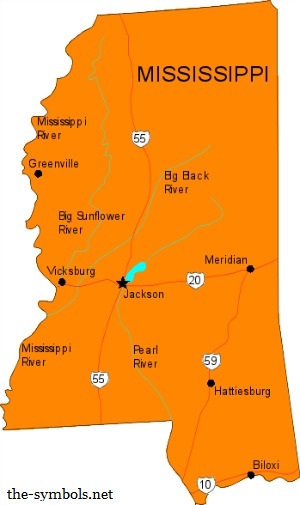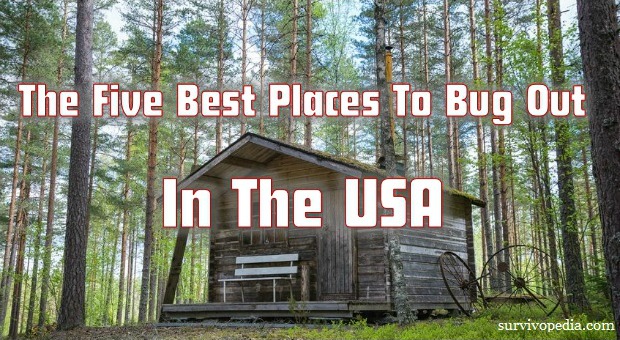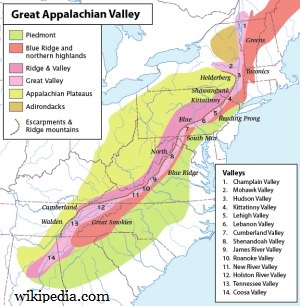I don’t care who you are or where you live, bugging out is one of the most complex scenarios for any prepper.
The huge number of factors that you have to consider, prepare for and execute in an effective bug out make bugging out a logistical and organizational nightmare.
More, these factors tend to change as times goes by, due to social and political issues that impact the natural resources and landscape in different areas of our country.
Nevertheless, anyone who knows survival and preparedness will tell you that you need a good bug out plan in place, even if your Plan A is to bug in, sheltering in place in your home.
The first and possibly biggest problem that has to be considered is where to bug out to. You really can’t do any of the other parts of your plan, until you decide where you’re going. Nor can you build a shelter, stockpile supplies or even make an accurate list of what equipment you’ll need, without having that one detail figured out.
Finding a good bug out location isn’t easy. A lot depends on the type of disaster you’re going to have to face. Another huge factor is where you live. Your bug out location needs to be far enough away from your home, so as to not get caught in the same disaster your home is caught in, while being close enough that you actually have a chance of getting there.
This is easier in some parts of the country, than it is in others. Generally speaking, it’s going to be easier to find a bug out location and develop a bug out plan, if you live in one of the less populated states.
The closer you are to the big cities, especially in the high population areas of the country, the harder you will find it to build yourself a bug out plan, with a survival shelter that is isolated enough to protect you from any marauders sweeping the countryside, looking for food and anything else they can get.
Those marauders are the biggest reason to have a bug out plan, with an isolated survival shelter. You can survive many things by sheltering in place, but when it comes down to it, the worst thing you could possibly face is a concerted attack on your home. That is the biggest trigger for bugging out.
Click here to discover how our ancestors survived during harsh times!
Requirements for a Bug Out Shelter
Regardless of what you’re bugging out from or where you’re bugging out to, there are some requirements that any bug out shelter needs. While there may be many different ways of meeting these requirements, finding the ideal location will be narrowed down by your personal situation. Where you live and how well you can get out of Dodge will be the biggest considerations.
Distance
As I’ve just mentioned, you want to be far enough away from home, that whatever disaster causes you to bug out, won’t hit your survival retreat. At the same time, you don’t want your retreat to be so far away, that you can’t get there. A retreat that’s 500 miles away from your home might be great, if you can get there. But if you can’t, all it’s going to do is give you reason to bemoan your choice.
You’ll want to be able to get there on one tank of gas. But you’ve got to consider that in any bug out situation, you’re likely to have traffic problems to contend with. So, you won’t get as far as you normally would on a tank of gas. Therefore, you should keep extra gas on hand, ready to take with you when you bug out.
Just recently Oroville, in Northern California was evacuated due to the risk of the dam’s emergency spillway failing. Since most of the people weren’t preppers, the bug out went just like everyone has said they will, with long lines of traffic creeping along the highway, gas stations out of gas, and people abandoning their cars when their tanks ran dry. You’ve got to make sure you’re not one of those people.
Defensibility
If you’re bugging out because of the aforementioned marauders, you need to take into consideration that you might have to defend your survival retreat. The more difficult the retreat is to access, with the more obstacles in any invader’s way, the better.
At the same time, you’ll need good defensive positions for your family or survival team, with good routes of escape, should that become necessary. While you probably won’t want to abandon your survival retreat unless absolutely necessary, it’s better to do that when needed, than it is to die defending it.
Concealability
An important factor in defending your retreat is keeping people from finding it. A log cabin sitting on the open prairie isn’t very well hidden; but one in the woods can be. Does the location you’re looking at give you the ability to hide your retreat, so that people aren’t likely to find it?
You need to look at this from both short and long distance. Some locations may be hard to see up close, but highly visible from the opposite mountainside. Others will be invisible from a distance, but once you get close, they are obvious. Proper planning and a good location will help you with this.
Of course, a lot has to do with how you build your shelter. If you’re going to build a big fancy log cabin on the side of a lake, with its own dock and an entire wall of glass, you’re going to have trouble hiding it. Going underground helps, as an underground shelter or bunker is harder to see. Even building an underground home, cut into the hillside, makes it hard for others to find you.
Resources
This is probably the single, most important item on the list. If you’re bugging out from home, then there’s a good chance that you’re going to need to be away for a while, maybe even permanently. No matter how much you stockpile, eventually you’ll need to live off the land. Does the location give you that possibility.
More than anything, this means having access to a good water source, fuel for the fire and game that you can hunt. But the soil matters too, as you’ll probably end up planting a garden to augment your food. Building materials may be important as well, especially if you can’t build your long-term shelter ahead of time.
Population
By definition, a survival shelter just about has to be in a low population area. That’s necessary for concealability, defensibility and resources. The more isolated the location, the better.
So a good way to start your search is to look at maps and define low population areas that are reasonably close to your home. Go and visit those areas, to see how well they meet the other needs for survival. When you find those that do, you can start looking for property that might be available.
Nuclear Risk
While the Cold War is long gone, with the thousands of nuclear-tipped missiles that the United States and Soviet Union had ready to launch, the nuclear threat has not gone away. Actually, it’s increased in recent times, with unstable nations joining the club of the nuclear capable. The risk of a nuclear strike, especially by EMP, is higher than it has been in decades, and it looks like it’s going to continue going up.
But a country doesn’t even need to own nuclear weapons in order to create a nuclear strike, all they need are good hackers. Every nuclear power plant in the world is controlled by computers, and most of those are tied into the internet in some way. Regardless of how good the security is, someone can hack it.
Our nuclear power plants have already been “tickled” by hackers, searching out their defenses. There have even been cases where one power plant or another was taken over and controlled remotely. This is extremely dangerous, as all it would take to create a nuclear disaster is for someone who hacked in to bypass the safeguards and let the reactor go wild.
Then there’s the risk of reactors being damaged by natural disasters. We’ve all head of Japan’s Fukushima reactor and how it’s spilling tons of contaminated waste into the Pacific Ocean per day. That sort of thing can happen anywhere, especially with aged reactors, which we’ve got our share of.
Affordability
Finally, you’ve got to look at what your budget will allow you to do. It won’t do you the least bit of good to buy a piece of property to use as a survival shelter, and then lose it, because you can’t make the payments. Don’t assume that whatever disaster you face that causes you to bug out will also make it possible for you to stop making payments. Some disasters might cause that, but others won’t.
Perhaps the worst thing that could happen to any prepper is to have their home or survival shelter foreclosed upon. Yet, if you do something that’s beyond your budget, that’s a very real possibility.
On to the Best Areas
The criteria I just listed actually narrow down the possible places where you or I can have a survival retreat considerably. There are large parts of the country which are just not going to work. While they might be good in one regard, they would be totally ineffective in others.
Take the Southwest, for example. There are many places in West Texas, New Mexico, Arizona and Nevada which are isolated and defendable, with very little nuclear risk. But those areas don’t have much water either. Unless you can find a place in the Southwest and can put in a solar powered well, your chances of effectively creating a survival retreat are minimal.
Other parts of the country just have too much population. Much of the Northeast and the West Coast fall into this category, although there are some areas that are more isolated. Even the most populated states have places you can hide, you just need to find them.
1. The Rocky Mountains
Whenever I think of bugging out or even owning a cabin in the woods, I think of the Rocky Mountains.
The fact that I grew up at the foot of the Rockies, in Colorado, may have something to do with that.
There’s a rugged romanticism associated with the Rockies, which were the home of Jim Bridger, Kit Carson and many other mountain men, long before ranchers and miners moved in and took over.
I’ve spent a lot of time in the Colorado Rockies through the years.
Today, much of the property is owned by somebody or other and what isn’t privately owned is owned by the government.
Nevertheless, there are many places where you can go and not see another person for miles around. Game is plentiful, there’s water in abundance and plenty of wood for building and a fire.
For that matter, many of the mountain communities would make good places to bug out to, especially if you owned a “cabin” or vacation home in one of them. If you could spend enough time there to become a familiar face, then when the time came to bug out, the community would accept you readily.
The nuclear threat in the mountains would be negligent, although Denver has been a big target for years. But then, if you were going to hide out in the mountains, it probably wouldn’t be near Denver anyway.
The only problem with the Rockies is price. Land in the mountains is expensive. But there’s always the possibility of using public land, bugging out to a state park or national forest. While you couldn’t build a cabin there ahead of time, you could probably cache some supplies by burying them.
2. The Appalachian Mountains
Not as isolated as the Rockies, the Appalachian Mountains are an excellent place to bug out to, especially in West Virginia, Kentucky and the western part of Tennessee.
Many of the people who live in those mountains are survivalist types anyway, who hunt, fish and keep their long guns in the back window of their pickup trucks.
There are actually areas in the Appalachians which are being developed as survival communities.
By developed, I mean that someone has broken up a large tract of land into ten acre lots and is selling it to people who want to build a survival retreat.
Since the area would be populated by like-minded people, there’s a good chance that they would band together to help each other out.
Resources shouldn’t be a problem, with these mountainous areas being just about as good as the Rockies.
Being closer to populated areas will also make it easier to buy the supplies and materials that you need for establishing your survival retreat.
For those who live in the eastern part of the United States, going into the Appalachians is the easiest way to get to an isolated area.
There aren’t too many other areas east of the Mississippi which will offer you as much privacy in a wooded mountain area.
3. The Northwest
When I’m saying the Northwest, I’m not talking about the Pacific Northwest. While Washington and Oregon are beautiful states, they’re also blue states.
That means that you’re more likely to run into government interference and restrictive gun laws. Rather, I’m referring to the states of Montana, Wyoming, Idaho and the Dakotas. These are some of the least populated parts of our country, making them ideal places to survive any social unrest.
There are very few nuclear sites in these states, although there were a fair number of nuclear silos dug into the countryside during the Cold War. Some of those are available and are being converted to survival bunkers. While you might not want to build million dollar survival condos for the wealthy, a silo or control bunker still makes a great survival retreat.
The low population of these states means that you’re unlikely to have problems with marauders or other two-legged vermin. Hunting and fishing are common, with game being plentiful. Actually, this area is one of the few places in the country where I’d say that living off the land is a very real possibility.
4. The Gulf Coast

If nothing else, you could always hunt alligator to eat. They’re a bit hard to skin, but the meat is good, especially when cooked Cajun style.
Getting close to the Gulf Coast has other advantages in the food department as well. Much of the world feeds itself from the world’s oceans.
That’s another important source of food to consider as part of your survival plans.
Adding a boat to your gear could make it very easy for you to survive.
For that matter, why not bug out onto a boat and live in the Gulf?
While salt water is not drinkable, it can be made drinkable by distillation.
All you’d need to do is build a still or even a solar still. Distilled water is the purest water you can find.
So, you could get both your food and your water from the Gulf.
5. Parts of Texas
While Texas poses its own challenges for survival, the fierce independence of Texans make it an attractive state to bug out to. There’s lots of open country available and the state is known for not putting up with any nonsense from troublemakers.
Remember the attempted Muslim attack on the Mohammed art show in Garland, Texas, shortly after the Charlie Hebdo massacre in France? Those attackers didn’t get more than a few feet from their car, before they were cut down. Had the people in France been Texans, things would have gone differently.
The big problem with Texas is water. Unless you happen to be fortunate enough to buy property with water on it, you’d better plan on putting in a well, and it might have to be a rather deep one at that. But if you can get a well in, the land is good for survival, with a lot of game. You could live for years on the feral hogs in some parts of the state. They breed so quickly that ranchers can’t keep their numbers down.
The other problem is building material. You’re probably not going to find enough tall trees to build a log cabin. That’s why our ancestors built with adobe in the Old West times. But don’t worry, homes made of adobe can last for over 100 years, much longer than the typical log cabin.
From building a shelter to orientation, there are so many survival skills you can learn from our ancestors who wandered the American lands hundreds of years ago.
Click the banner below for more!
This article has been written by Bill White for Survivopedia.
from Survivopedia
Don't forget to visit the store and pick up some gear at The COR Outfitters. How prepared are you for emergencies?
#SurvivalFirestarter #SurvivalBugOutBackpack #PrepperSurvivalPack #SHTFGear #SHTFBag




No comments:
Post a Comment